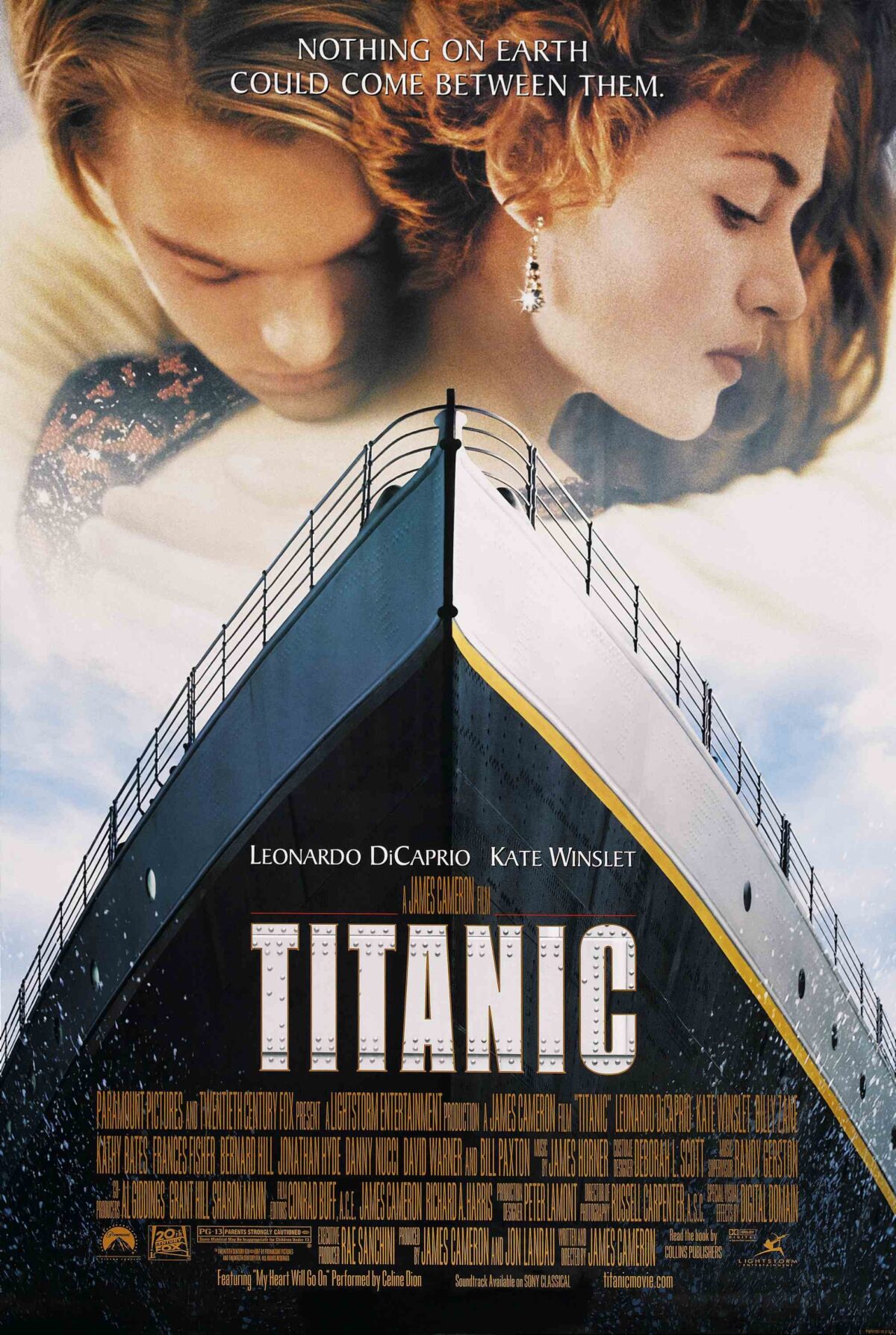Introduction:
James Cameron’s “Titanic,” released in 1997, stands as a cinematic triumph that defies the boundaries of genre, seamlessly blending romance, drama, and historical tragedy. This epic film, set against the backdrop of the ill-fated maiden voyage of the RMS Titanic, not only captured the hearts of audiences worldwide but also left an indelible mark on the landscape of modern cinema. As we embark on a retrospective journey through the grandeur and emotion of “Titanic,” it becomes evident that the film transcends the mere confines of a love story, emerging as a timeless spectacle that resonates with viewers across generations.
I. A Voyage into History:
A. Historical Context:
- The allure of the Titanic’s historical tragedy
- Cameron’s commitment to historical accuracy
- The ship as a symbol of human hubris and vulnerability
B. The Dual Timeline:
- The contemporary exploration in the film’s framing narrative
- The juxtaposition of young and elderly Rose
- Creating a narrative bridge between past and present
C. Meticulous Set Design and Visuals:
- The recreation of the grandeur of the Titanic
- Attention to detail in set design and costumes
- Groundbreaking visuals that brought the ship to life
II. Romance Amidst Tragedy:
A. Jack Dawson (Leonardo DiCaprio) and Rose DeWitt Bukater (Kate Winslet):
- The portrayal of class divides and societal expectations
- The chance encounter that sparks a forbidden romance
- DiCaprio and Winslet’s on-screen chemistry and memorable performances
B. The Iconic “King of the World” Scene:
- The exhilarating moment at the bow of the ship
- Capturing the essence of youthful exuberance
- The scene’s cultural impact and parodies in popular media
C. Love, Sacrifice, and Loss:
- Jack and Rose’s journey from romance to tragedy
- Sacrifices made for love amidst the sinking ship
- The emotional weight of the film’s climactic moments
III. Cinematic Grandeur:
A. James Cameron’s Direction:
- Cameron’s vision and dedication to the project
- The challenge of balancing spectacle with emotional depth
- Cameron’s ability to create an immersive experience for audiences
B. Musical Score by James Horner:
- The emotive power of Horner’s musical composition
- The iconic theme song, “My Heart Will Go On”
- Horner’s collaboration with Cameron in enhancing the film’s emotional resonance
C. Technical Achievements:
- Innovations in special effects and CGI
- The meticulous recreation of the sinking Titanic
- The film’s impact on the evolution of filmmaking technology
IV. Character Depth and Ensemble Cast:
A. Rose’s Character Arc:
- Rose’s transformation from societal constraints to personal liberation
- Kate Winslet’s portrayal of a complex and empowered character
- The resonance of Rose as a symbol of female agency
B. Supporting Characters:
- Cal Hockley (Billy Zane) as the antagonist
- The camaraderie among the ship’s crew
- The ensemble cast’s contribution to the film’s narrative richness
C. Emotional Engagement:
- The audience’s investment in the characters’ fates
- Balancing individual stories within the broader historical context
- The film’s ability to evoke empathy and connection with characters
V. Critical Reception and Awards:
A. Box Office Success:
- Breaking records and becoming the highest-grossing film of its time
- Titanic’s enduring popularity and financial success
- The film’s impact on the global cinematic landscape
B. Academy Awards Triumph:
- Titanic’s historic sweep at the 1998 Academy Awards
- Recognition for direction, music, and technical achievements
- The film’s inclusion in discussions of Oscar-winning classics
C. Cultural Impact and Enduring Legacy:
A. The “Titanic” Phenomenon:
- The film’s widespread cultural impact
- The resurgence of interest in Titanic’s history
- Titanic-themed events and tourism
B. Parodies and Homages:
- The film’s influence on popular culture
- Homages and parodies in various forms of media
- The enduring presence of Titanic references in contemporary discourse
C. Revisiting “Titanic” Over the Years:
- The film’s enduring appeal for new generations
- Analyzing the impact of nostalgia on viewership
- The role of “Titanic” in discussions about cinematic classics
VI. Criticisms and Controversies:
A. Script and Dialogue Critiques:
- Evaluating criticisms of the film’s dialogue
- The balance between romantic tropes and historical accuracy
- Debates over the film’s handling of class dynamics
B. Historical Accuracy Debates:
- Addressing historical inaccuracies and creative liberties
- The portrayal of real-life figures and events
- Balancing artistic interpretation with historical fidelity
C. The “Door” Controversy:
- The enduring debate over the feasibility of Jack’s survival
- Scientific analyses and fan theories surrounding the door scene
- The ongoing humor and memes derived from the controversy
Conclusion:
As the cinematic voyage of “Titanic” continues to echo through time, it remains a testament to the power of storytelling, artistic vision, and the ability of film to capture the human experience. James Cameron’s magnum opus transcends the label of a mere blockbuster, emerging as a cinematic classic that has left an indelible mark on the hearts of audiences worldwide. “Titanic” is more than a love story or a historical drama; it is an immersive journey that navigates the depths of human emotion, tragedy, and resilience, proving that, even decades later, its impact continues to ripple across the vast seas of cinematic history.
